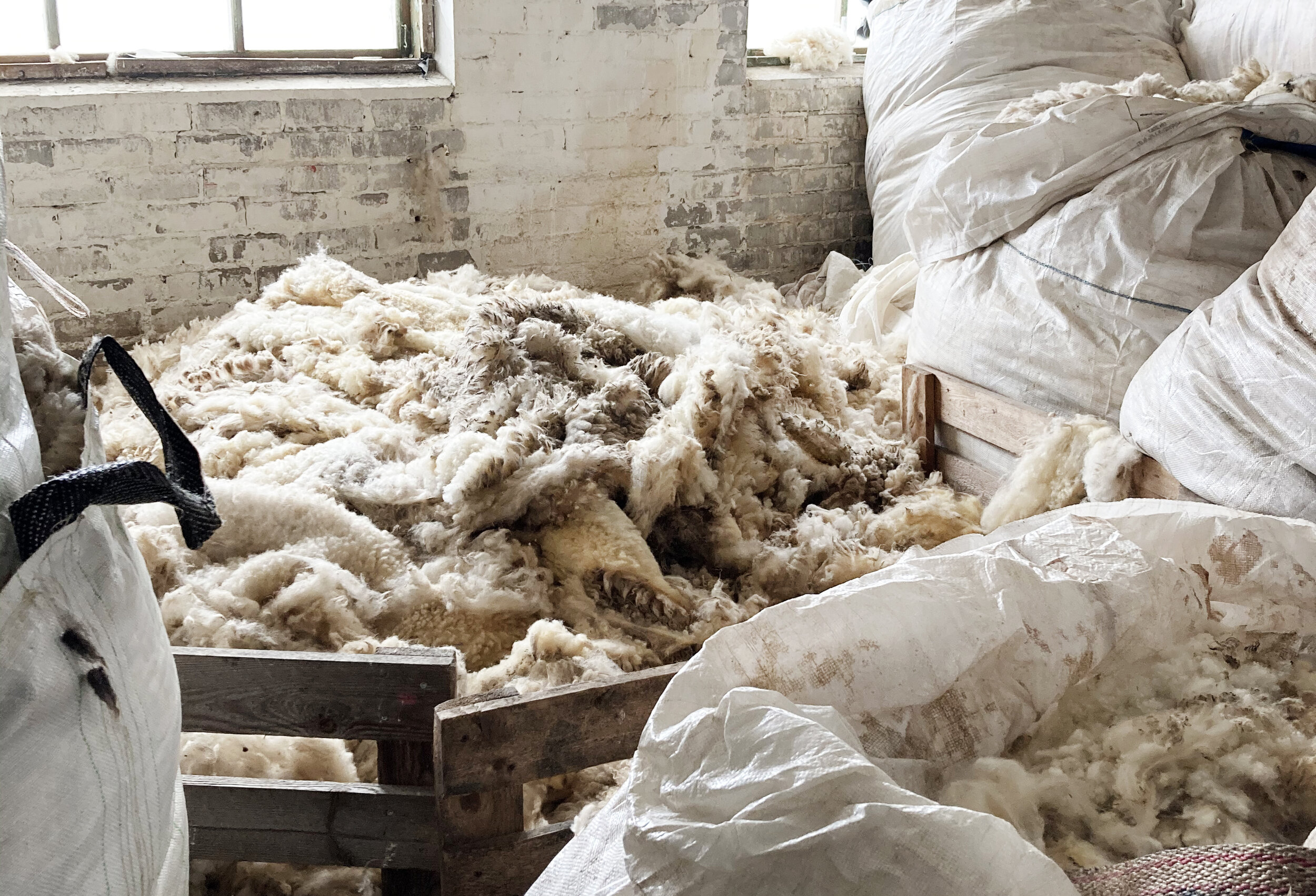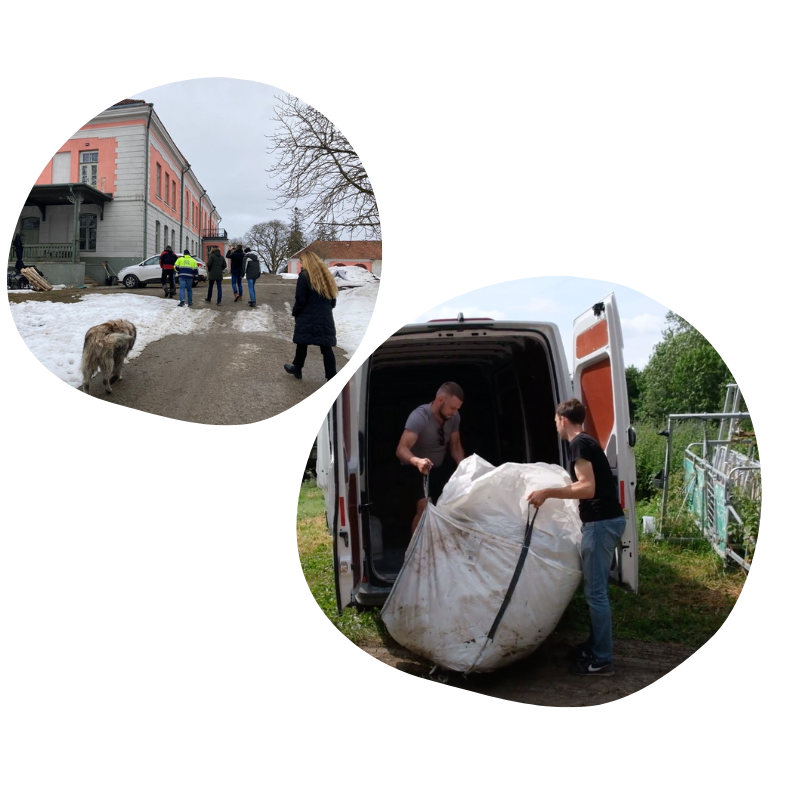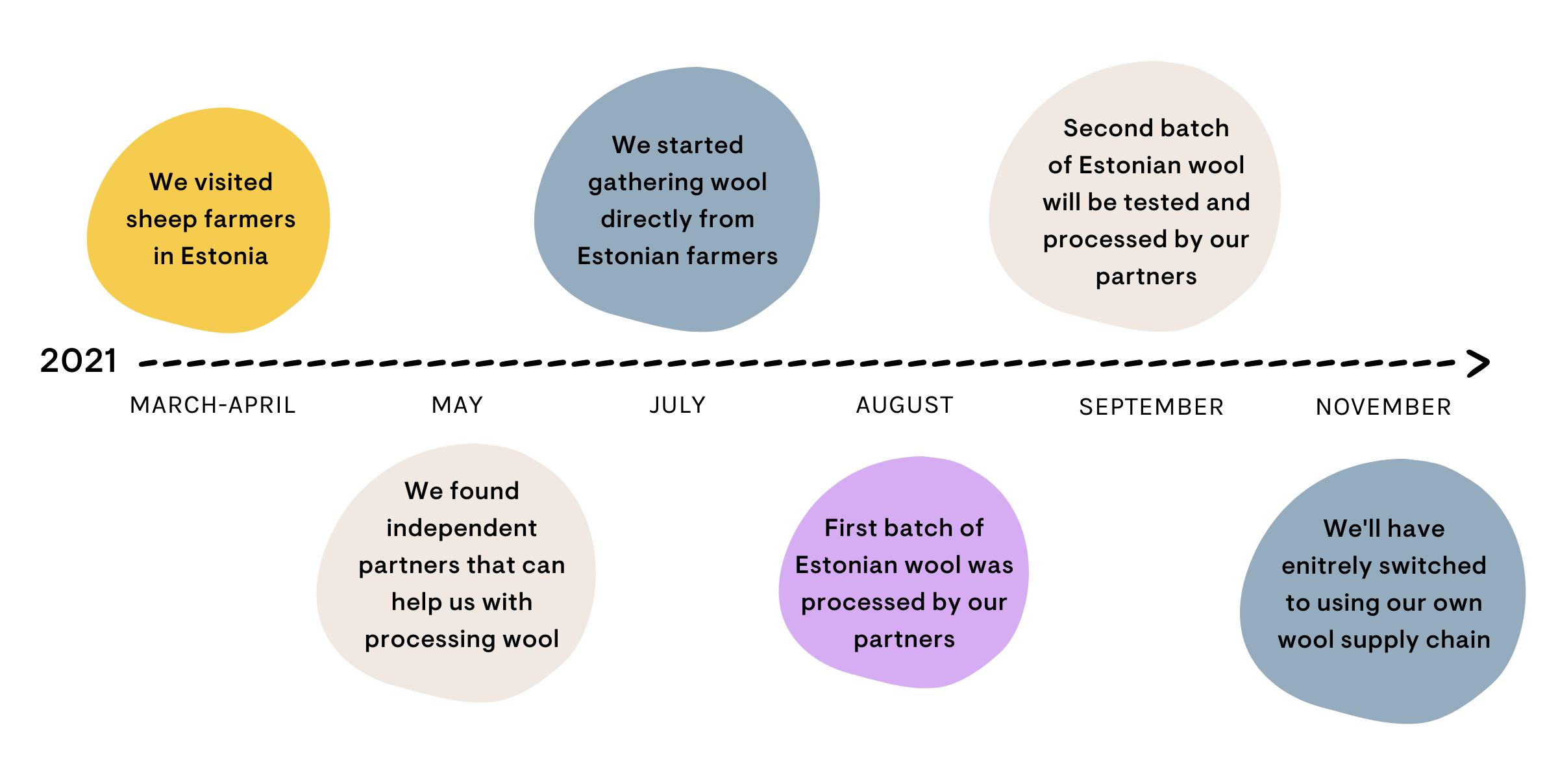Why wool? And why do farmers burn it?
We still can’t wrap our heads around the fact that up to 90% of sheep wool is burned or buried in countries across Europe – that’s around 200 000 tonnes every year. It’s a fact that inspired us to start Woola.
Our ambition to fix the packaging industry goes way back to the pre-Woola times when we were running an e-commerce business. Like most e-commerce companies, we relied on plastic packaging made of fossil fuels.
We invested lots of time and money into trying out different bubble wrap alternatives but none of them met the expectations. So when we found out about waste wool – a naturally high-tech material that can kick plastic out of the picture – it just made sense to use it.
We started prototyping and found out that it actually works. This made us very excited about the future.
It all sounded too good to be true… until we faced the first gigantic challenge – there was no proper supply chain for such “low grade” wool.
So, we set out to build one.
A win-win supply chain
To save leftover wool from going to waste, infrastructure needs to be set up from scratch.
What would you do, when someone would take your year’s work, pay you half of its worth and tell you they’re doing you a favour with this? Yup, that’s why farmers prefer to compost or burn their wool.
First and foremost, we need to build relationships with sheep farmers and shearers. From there, the wool needs to be industrially washed, processed and distributed for manufacturing. The key is to set up the whole process in a way that benefits not only us as a company but also sheep farmers, sheep, and everyone else along the way.
Too many farmers have been outsiders in the wool supply chain for years — because their wool’s quality is not high enough for producing yarn. There are a few players in the market who buy wool from them, but they offer a very low price, don’t value their product or are just unreliable.
What would you do, when someone would take your year’s work, pay you half of its worth and tell you they’re doing you a favour with this? Yup, that’s why farmers prefer to compost or burn their wool.
Sheep farmers are looking for a reliable partner, who would value their product, help cover the costs of shearing and help turn the material into something meaningful.
See the video to hear Morgan, a sheep farmer in Rägavere, Estonia, sharing his story.
Finding the right partners
Going out and actually meeting farmers face to face is key in understanding them. Finding out their real pains and building partnerships on a similar set of values. We’re very lucky that one of our founders has been in the wool business for over 15 years and is already an insider in the waste wool area.
We’ve set “low standards” for the quality of wool but very high standards for where the wool comes from. We only work with farms that take good care of their sheep, give them plenty of space, proper feed and shear them without harming the sheep in any way.
No to factory farms
To make that extra clear – we don’t work with factory farms. Factory farming is an industry that is designed to maximize production while minimizing costs. Intensive farming uses crops as feed since large-scale farming on scraps is not possible.
The industry doesn’t invest in the well-being of sheep because this doesn’t affect their end goal. Factory farms grow sheep in dubious living conditions. The animals lack space and we have little insight into their shearing practices.
They’re also environmentally unsustainable and just don’t make any sense.
There’s a better way
There are farmers who have been herding sheep in their land for decades. We visited many of these farms in Estonia. The sheep live freely on grasslands, some of which have been passed on to the farmers by previous generations. They farm small flocks, usually under 100 sheep. We looked at how the sheep live and how they’re sheared.
The financial sector has KYC, we have KYW - Know Your Wool. We are visiting all the farms we gather wool from and make sure they fit our profile for ethical wool.
The timeline
We started building the wool supply chain in early 2021, piece by piece. See the initially planned timeline below.
Edit (January 2023): While this timeline turned out to be a little too ambitious, we did switch over to wool sourced locally in Estonia in 2022.
Make sure to follow us on social media and subscribe to our newsletter for future updates (including top sheep content).




